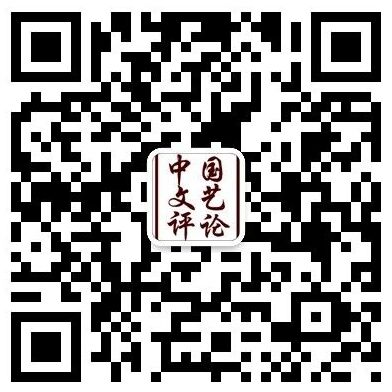
Hot Spot Observations •Opportunities and Challenges for Literary Development in the Age of AI (II)
■ Is Generative AI an Author? (PP. 4–17)Yang Guang
Abstract: Is generative AI an author? The answer to this question depends on what the author is. By tracing the technical history behind the conceptual development of western authors from "singer" to "producer", we can see that several important "transfigurations" of author all contain traces of a series of technical history transformations, such as voice, alphabet, writing, printing and video, which "de-place" literary theoretical discourse. These traces exist subtly and concretely in the theoretical discourses concerning author, such as "expelling the poet", from the scripter to the author in its modern sense, and The Author as Producer(Benjamin, 1934). Based on the preliminary exploration of the technical history conditions underlying the concept of author, this article argues that generative AI is not the author in the traditional sense but rather the technical history force for the concept of "author" to be de-placed again in the era of digital intelligence. The real challenge of generative AI is that it is de-placing the concept of author. Specifically, it is engraving "immortality" and "animality" into the concept of author today, leading to dehumanizing the concept of author. For the first time in history, the theory about author in the generative AI era is faced with the difficult problem of how to deal with the complex relationship between the "portrait" author and the "non-portrait" author such as the non-human entities. The answer to this difficult problem will determine in what sense the "portrait" author can still exist in the era of generative AI.
Keywords: history of technology, the concept of author, generative AI, de-placement, literary theory on technology
■ Understanding the Reality and Future of AI Painting from Three Perspectives (PP. 18–26)Sheng Wei
Abstract: In recent years, AI technology has developed rapidly and is widely used throughout society, including in art. Various AI artists are challenging human artists and sparking numerous debates. This article comprehensively explores the current situation and prospects of AI art from three perspectives: history of technology, history of art, and humanism. From a technical logic perspective, it is not difficult for AI to create artworks that can rival human masters. From the perspective of art history, it is difficult for AI to learn from existing data to create new art paradigms. From a humanistic perspective, if human society is still based on humanism, AI will not be able to replace human artists. Finally, looking to the future, perhaps with the deep integration of humans and machines, we may become the "new humans" of carbon-based and silicon-based fusion, and art will also become the corresponding "new art".
Keywords: Artificial Intelligence (AI), art, painting, history of technology, history of art, humanism
■ The Innovative Practice and Research on AI Composition Technology (PP.27–34)Liu Hao
Abstract: With the improvement of big data technology, the application of AI technology in the field of music creation is becoming more and more widespread. AI composition technology realizes automatic composition through deep learning models, which lowers the threshold of music creation and enables ordinary people to participate in professional creation. There are already numerous AI composition platforms and tools, such as Magenta, Suno, SkyMusic, etc. In this article, we first analyze the application of AI technology in music generation, style migration, and music complementation. Secondly, it takes the example of Shanghai Conservatory of Music's continuous exploration of the application of AI composition in teaching practice to show its strong potential in the fields of non-genetic inheritance and Music Therapy. It is worth noting that although AI technology also has an impact on the art of music, musicians should actively integrate new technologies to promote the joint development of art and technology.
Keywords: AI composition technology, music generation, music macro-modeling, Music Therapy, virtual museum
■ View the Future from the Perspective of Tradition:My Journey to the Heart of Artificial Intelligence Artistic Creation (PP. 35–42)Shu Yong
Dialogue in the Art Word
■ Aesthetic Education is Related to Humanistic Cultivation:An Interview with Professor Zhou Xian of Nanjing University (PP. 43–54)Interviewed by Liu Jinghan
Random Thoughts on Art
■ Great Beauty, the Art of Great Beauty, and the Great Aesthetic Education:A Reconsideration of Art and Aesthetics from the Perspective of Great Historical View (PP. 55–66)Song Xiujian
Abstract: The Chinese nation has a long history of using beauty to educate individuals, harmonize families, and govern the country, which has thereby formed the Chinese tradition of aesthetic education that upholds "Great Beauty" to cultivate "Great Individuals." This tradition has allowed Chinese civilization to maintain its continuous internal vitality. Throughout the journey of the Chinese nation in striving for dignity and wealth, this tradition of aesthetic education has been activated, resulting in the emergence of folk arts and popular aesthetic education. On the new journey towards the strength of the Chinese nation, we must create "the Art of Great Beauty "of the new era through Chinese art, the art of the people, and the art of the times. It is essential to construct a holistic system of great aesthetic education that organically encompasses a comprehensive curriculum and teaching system across all disciplines, a whole-process educational system within schools, and a social resource system across all domains. This "Art of Great Beauty" should fully permeate daily life, allowing everyone in all fields to receive artistic and aesthetic nourishment, guiding the Chinese nation towards a great rejuvenation with the elegance of Eastern beauty.
Keywords: Great Beauty, Great Aesthetic Education, Literature and Art of the New Era
■ A Study on the Exploration of the Nationalization in Wang Liping's Vocal Suite Music Based on Dream of the Red Chamber(PP. 67–76)Chen Zonghua
Abstract: The vocal suite composition for the 1987 television adaptation of Dream of the Red Chamber stands as a groundbreaking achievement and a benchmark in the exploration of the musical sinicization in 20th-century China. Its success is attributed to composer Wang Liping's unwavering commitment to creating new music rooted in national identity. Wang deeply grasped the aesthetic sensibilities of the Chinese people and the essence of traditional folk music, achieving remarkable results in three key areas: innovatively advancing the integration of classical poetry and music, creatively advocating and practicing the "thirteen-tone" method for musical sinicization, and specifically training singers to develop the distinctive "one voice, three echoes" style of nationalized vocal performance.
Keywords: Wang Liping, the vocal suite of Dream of the Red Chamber, nationalization of music, poetry and music, thirteen is not a number, one voice evokes three sighs
■ Revisit and Reconstruct:Art-Oriented Rural Reconstruction Proposition in China (PP. 77–89)Wu Jingying
Abstract: "Chinese society is fundamentally rural", which serves both as the issue's wellspring and the core reality of art-oriented rural reconstruction efforts in China. This article seeks to analyze multiple forms of how art connects with the land in a global context, alongside the historical development of rural reconstruction practices in China since the modern times, in order to clarify the distinctive characteristics of the "interventional" and "integrative" approaches to art-oriented rural reconstruction that have emerged in China over the past decade. In revisiting and reconstructing the position and operational framework of China rurals, reflections on artistic rural reconstruction within the Chinese context will be presented.
Keywords: artistic rural reconstruction, interventional, integrative, rural revitalization, subjectivity
Art Beyond China
■ The Expansion and Limits of the Aesthetics of Atmospheres (PP. 90–104)Guo Yongjian
Abstract: Gernot Böhme's atmosphere aesthetics is one of the most valued aesthetics today. It has a distinctive aesthetic point of view and a solid philosophical foundation. It transforms physiognomy through phenomenology and provides a more reasonable explanatory model for natural aesthetics, which is different from the previous artistic and scientific models and can be called the "third way" or "third model". The concept of atmosphere also has some explanatory power for other aesthetic phenomena, including art. As a new phenomenological aesthetics, the aesthetics of atmosphere makes a breakthrough in traditional aesthetics and expands classical phenomenological aesthetics. Its main contribution is to restore Baumgarten's sensibility through the concept of "atmosphere", to reconstruct a sort of "aesthetics as perception", and to try to transcend aesthetics as a philosophy of art. In addition, the aesthetics of atmosphere has a strong affinity with Chinese aesthetic culture. However, atmosphere aesthetics also reveals some defects, indicating the limits of its aesthetic expansion. There are four main problems with atmosphere aesthetics: (1) Is perception the same as aesthetics? (2) Are all perceptions of atmosphere aesthetic? (3) Is the purpose of art only to create atmosphere? (4) Does the concept of atmosphere have a universality that covers all aesthetic phenomena? If these four questions can be established, it means that the aesthetics of atmosphere still needs to be improved. And the refinement or expansion of atmospheric aesthetics can have both conceptual and cultural dimensions.
Keywords:atmosphere aesthetics, Böhme, nature aesthetics, art, phenomenology, physiognomy
Preface, Postscript and Book Review
■ Profound Knowledge Leads to Good Results, Distinguishing Itself from All the Others:The Theoretical Revelations from Zhong Chengxiang's Chasing the Light in the Art World: My Forty Years' Experience with Guangming Daily(PP. 105–112)Chen Tingyi
Abstract: Chasing Light in the Art World: My Forty Years' Experience with Guangming Daily(hereinafter referred to as Chasing Light in the Art World) is a collection of literary and art theoretical commentaries by the renowned literary and art critic Zhong Chengxiang, which were published in Guangming Daily from 1980 to 2024. The book adheres to the people-centered creative orientation, adheres to the Marxist dialectic as the first ruler of literature and art criticism, adhere to the principle of seeking truth from facts, and adheres to the unswerving Party-led literature and art policy. It examines the iteration and evolution of China's literature and art phenomena, literature and art trends, and literature and art creations in the past four decades. It also vividly presents the author's original aspiration and mission of literature and art criticism that they have always been adhering to against the background of the era of change, deeply fusing the historical experience with the literary and art phenomena of the era. The book puts forward the cultural construction proposition of "cultivating the people with culture, nourishing the heart with art, molding the image with beauty, emphasizing on the leading, valuing self-conscious, and winning with self-confidence". In short the book provides valuable reference for the development of the cause of literature and art criticism.
Keywords:criteria of literary criticism, Marxist concept of literature and art, quality of literary theory
Interview with Renowned Experts
■ Promoting System Innovation Through Basic Research:An Interview with the Literary Theorist Dong Xuewen (PP. 113–124)Interviewed by Cui Ke

Inside Front Cover
Chinese Literary Critics: Zhang Jing


Inside Back Cover
Call for Subscription of Magazine, China Literature and Art Criticism in 2025

Back Cover
New Book Recommendation: Literary and Artistic Paths Combining Marxism and Excellent Traditional Chinese Culture



中国uedbet全球体育uedbet让所有玩家提款网

“中国uedbet全球体育uedbet让所有玩家提款”微信公号

“中国uedbet全球体育uedbet让所有玩家提款”视频号